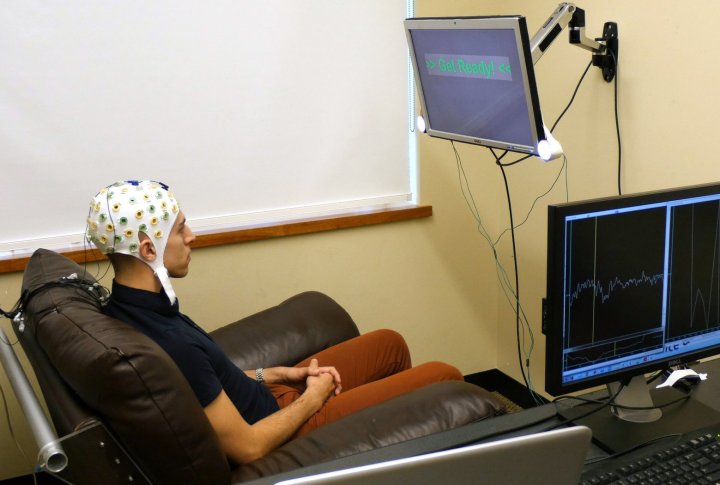
Researchers placed the participants in rooms that were a mile apart on campus and connected them through skull caps and computers. One participant wore an electrode-laden skull cap that relayed brain signals to an EEG machine. These signals were sent to a second participant, who wore a similar skull cap with a magnetic coil. The coil was positioned precisely to stimulate the part of the brain that controlled the visual cortex.
The participants then began a game of “20 Questions” with the electrode-wearing participant picking an object and the magnetic coil person asking one of the “20 questions” using a computer. The electrode-wearing participant would respond yes or no to the questions by looking at a flashlight that indicated the correct answer. A “No” answer would not send a brain signal response, while a “Yes” answer would send a signal over the internet to the magnetic coil participant. This “yes” signal would produce a visual disruption in the recipient who was wearing the magnetic coil. I consistently saw lines,” said UW assistant professor Andrea Stocco. “Some saw lightning bolts, blobs or shapes.”
Researchers were surprised by the success of the experiment with participants correctly guessing the correct answer an astounding 72 percent of the time. In those successful games, participants were able to detect a yes answer for 90 percent of the questions. These results contrast with control games that ended successfully only 18 percent of the time.
According to the UW researchers, this is one of the first experiments to show that two brains an be directly linked together in a collaborative effort. Researchers hope to improve the precision of this communication, possibly allowing participants to send distinct shapes from one person to another. The results of the study were published this week in PLOS ONE. Funding for the research was provided by a $1 million grant from the W.M. Keck Foundation, a charitable foundation that supports medical, science and engineering research.



